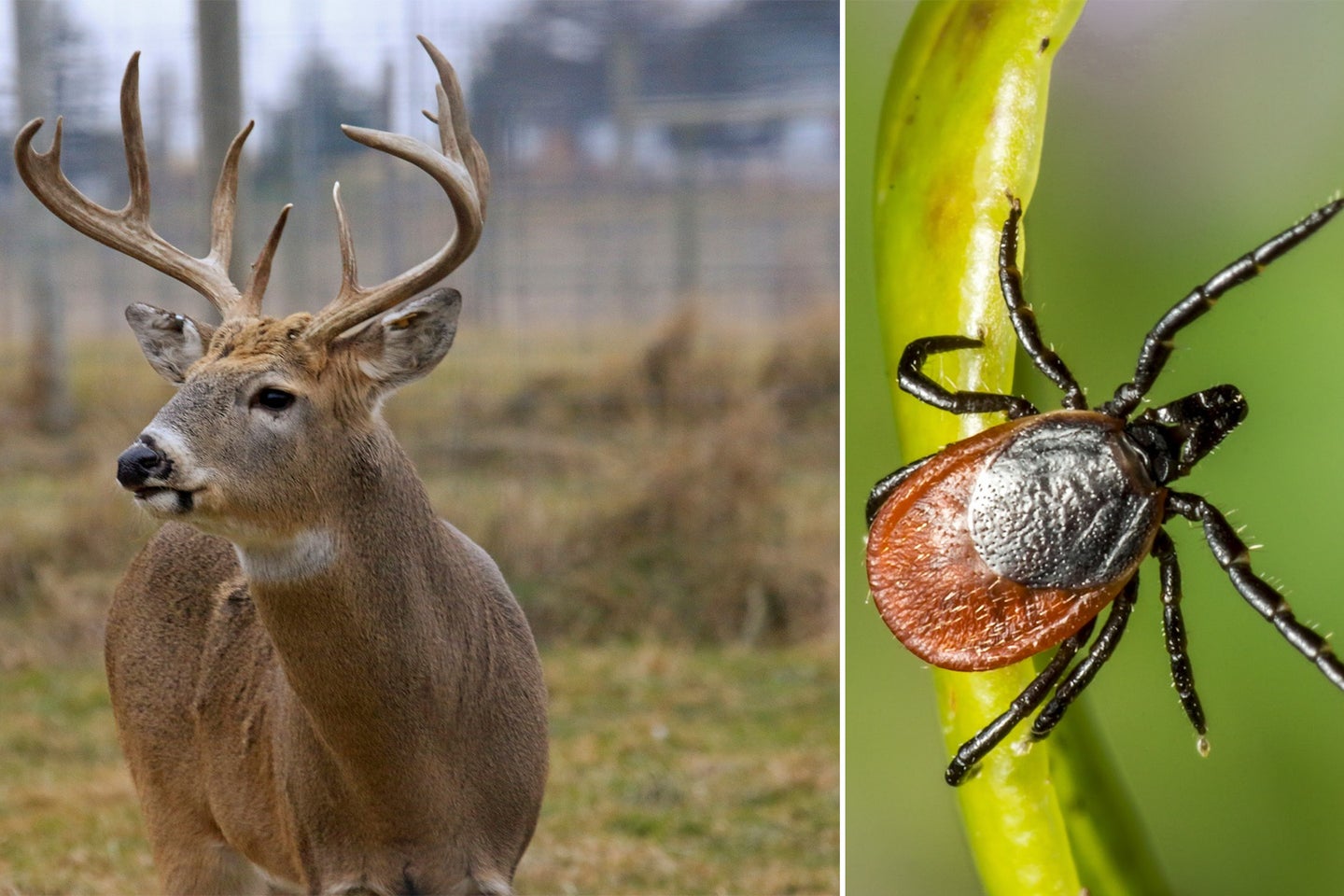Is Whitetail Deer Blood the Key to Fighting Lyme Disease in Humans?

Tick-borne diseases have been on the rise in the United States for well over two decades. Entomologists point to the proliferation of whitetail deer populations as the culprit behind a steep rise in overall tick numbers—which in turn drives increased numbers of tick-borne diseases in humans, from tularemia to Rocky Mountain spotted fever. But new research shows that whitetails might also hold the key to treating and preventing one of the most prolific and dangerous of all tick-caused diseases—Lyme disease.
The research, published in the Journal of Vector-Borne and Zoonotic Diseases on March 21, explored the immunity that whitetail deer have to Lyme by demonstrating their blood’s ability to kill the corkscrew-shaped bacterium that gives rise to the debilitating disease. “Deer are vitally important to the survival of deer ticks,” said the study’s senior author Stephen Rich, professor of microbiology at UMass Amherst. “But they are not involved with transmitting the Lyme bacteria, Borrelia burgdorferi.”
The transmission of Lyme-causing bacteria begins when juvenile black-legged deer ticks feed on mice. The mice pass the bacteria to the ticks which then deliver it directly into the bloodstream of unsuspecting humans. “We are the accidental host,” Rich said. “The ticks that bite us are actually looking for a deer because that’s where they breed. Without the deer, you don’t have ticks. But if you had only deer, you wouldn’t have any Lyme.”
According to the Centers for Disease Control and Prevention (CDC), Lyme has become the most common vector-borne disease in the United States, with some 476,000 people being diagnosed each year. That’s why the CDC awarded a $10 million research grant last year that helped fund Rich’s study.
“We’ve known for some time that ticks taken from white-tailed deer are not infected, and we speculated that something about the deer prevented those ticks from becoming infected,” Rich said. “But until the publication of our paper, no one had done the experiment to show that deer blood—specifically the serum component of white-tailed deer blood—kills Lyme.”
Those experiments were conducted on a captive herd of whitetails in Auburn, Alabama. Though the deer used in the experiments were free from any exposure to ticks or Lyme-causing bacteria, their blood serum still contained Lyme disease-killing properties. This suggests that, over time, the whitetail deer’s immune system has evolved an innate ability to kill off Lyme-causing bacteria before the disease has a chance to develop.
“The Lyme bacterium has proteins on its surface that protect it from the human innate immune system,” said UMass Amherst doctoral student and fellow author on the study Patrick Pearson. “Deer blood is somehow different such that Lyme bacteria are apparently unable to protect themselves from the innate immune system of white-tailed deer.”
Read Next: New Study Says Possums Don’t Like Eating Ticks
Before disease specialists can harness the power of deer blood, scientists will need to better understand the precise mechanisms at play when a whitetail’s blood serum kills off the Lyme-causing bacteria. “We’d like to determine if it’s something we can induce in humans,” Rich said. “Or maybe we could use this somehow to our advantage to reduce the incidence of Lyme disease in the wild.”
The post Is Whitetail Deer Blood the Key to Fighting Lyme Disease in Humans? appeared first on Field & Stream.
Articles may contain affiliate links which enable us to share in the revenue of any purchases made.
